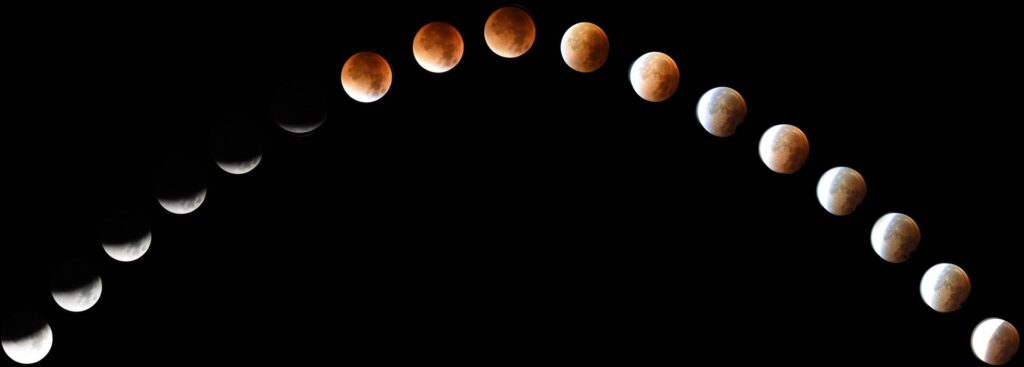On the night of Tuesday, September 17, 2024, the skies will offer a stunning celestial event: a partial lunar eclipse coinciding with a supermoon, also known as the Harvest Moon. For skywatchers across parts of North America, South America, Europe, and Africa, this event promises a visually captivating experience. Here’s everything you need to know to catch the eclipse at its peak.
What is a Supermoon and The Harvest Moon?
A supermoon occurs when the moon is at its closest point to Earth in its orbit, called perigee, making it appear slightly larger and brighter than usual. The September full moon also carries the title Harvest Moon, the name given to the full moon nearest to the autumnal equinox. Historically, this bright moon provided farmers with extra light to gather their crops late into the evening.
What is a Partial Lunar Eclipse?
A partial lunar eclipse occurs when only a portion of the moon passes through the Earth’s shadow, or umbra, causing a subtle “bite” to appear on the lunar surface. This event differs from a total lunar eclipse, where the entire moon is shadowed. For the September 17 eclipse, around 3.6% of the moon’s surface will be covered by Earth’s shadow(Timeanddate)(High Point Scientific).
Key Viewing Times for the Eclipse
The lunar eclipse will unfold over several hours, with each phase offering a different view of the moon’s progression through Earth’s shadow. Here’s the timeline for the Eastern Time (ET) zone:
- Penumbral Eclipse Begins: 8:41 PM ET
- Partial Eclipse Begins: 10:13 PM ET
- Maximum Eclipse: 10:44 PM ET
- Partial Eclipse Ends: 11:15 PM ET
- Penumbral Eclipse Ends: 12:47 AM ET (September 18)
While the eclipse will be visible for most of the night, the best time to watch is during the maximum eclipse at 10:44 PM ET, when the largest portion of the moon will be covered by Earth’s shadow(Yourweather.co.uk | Meteored)(High Point Scientific)(Star Walk).
How to Watch
To get the best view, it’s essential to find a location with minimal light pollution and an unobstructed view of the sky, preferably with a clear view of the eastern horizon. You won’t need any special equipment, but binoculars or a telescope can enhance the experience by revealing more detailed features of the moon’s surface.
For those in areas where the eclipse will be fully visible, the change will be subtle but noticeable as the moon moves through Earth’s shadow. The bright golden planet Saturn will also be visible near the moon, adding a beautiful touch to the night sky(NASA Science)(Yourweather.co.uk | Meteored).
Other Viewing Tips
- Weather Conditions: Check your local weather forecast to ensure clear skies.
- Photography: If you’re interested in photographing the event, consider using a tripod and long-exposure settings to capture the details of the eclipse and surrounding stars.
- Plan Ahead: The entire event will last over four hours, but the partial eclipse, when the shadow is most visible, will last just over an hour, so make sure to be outside during the key moments.
The combination of a partial lunar eclipse and a supermoon makes September 17, 2024, a special night for skywatchers. Whether you’re a seasoned astronomer or a casual observer, this event promises a fascinating glimpse into the mechanics of our solar system. Mark your calendars, prepare your viewing spot, and enjoy the show as the moon glides through Earth’s shadow.
In addition to the lunar eclipse and supermoon, this celestial event will also feature Saturn shining brightly near the moon, adding to the spectacle. Saturn, at its brightest due to its recent opposition, will be clearly visible in the night sky. This rare alignment provides a perfect opportunity for both stargazers and photographers to capture multiple cosmic wonders in one frame. Be sure to have your binoculars or telescope handy to enhance your view of the planet’s rings alongside the eclipsed moon.

